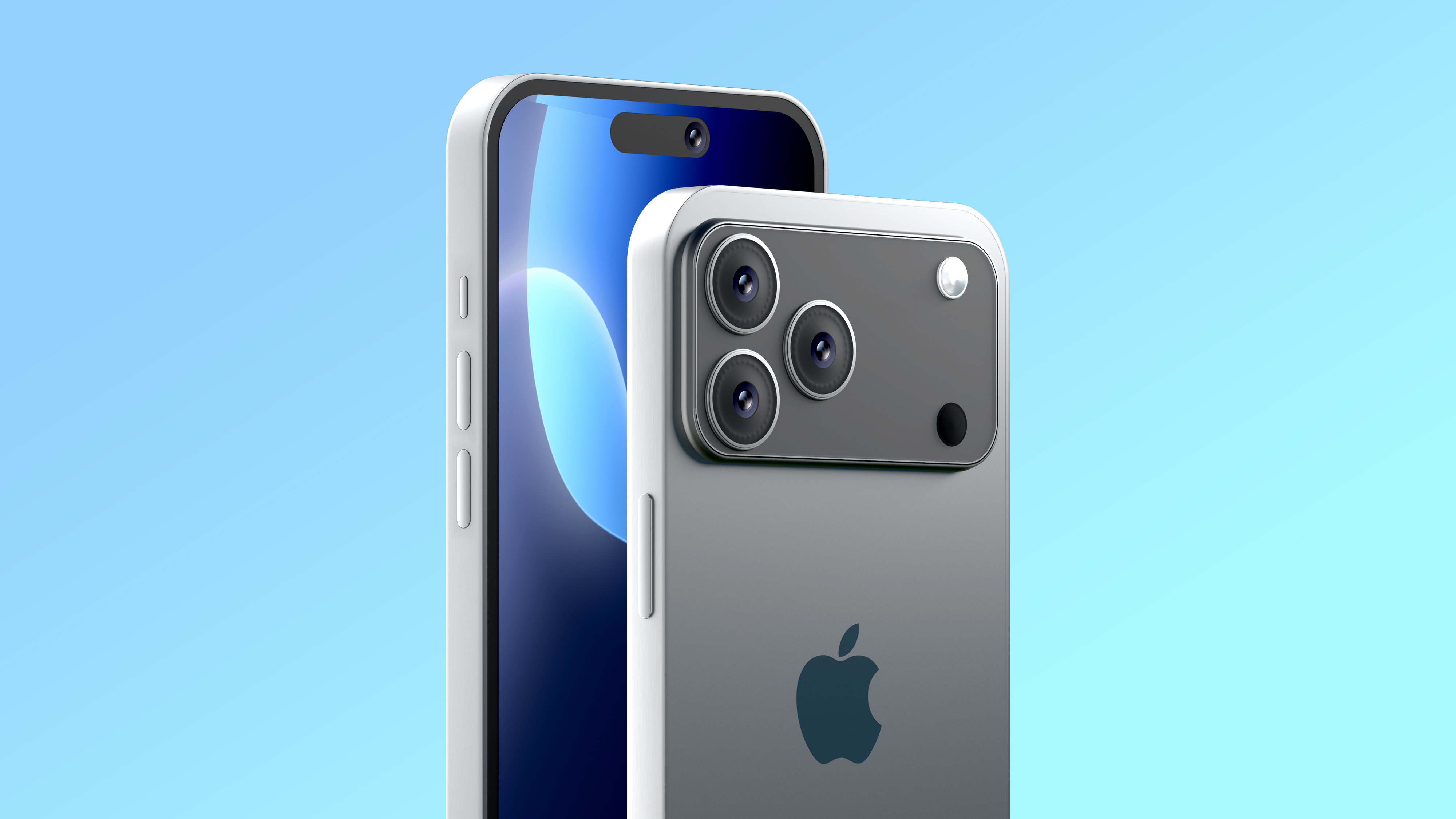Tom's Guide Verdict
Xiaomi's gorgeous, nearly bezel-free Mi Mix 2S is a sight to behold, and it works on U.S. networks. But is it worth importing?
Pros
- +
Gorgeous ceramic design
- +
Excellent performance
- +
Support for GSM carriers
Cons
- -
Hit-or-miss cameras
- -
Not available in U.S.
- -
Middling display
Why you can trust Tom's Guide
Those who hate the notch might just love the Mi Mix 2S, the latest premium smartphone from China's Xiaomi. While that name might be unfamiliar to most in the U.S., Xiaomi has garnered a worldwide reputation in recent years for innovative design, powerful hardware and low prices, even though the bulk of the company's products never make it out of Asia. And there's no better example of those traits in the company's portfolio than the Mi Mix series, which manages a mostly bezel-free look without relying on an unsightly notch.
Like all of Xiaomi's wares, the Mi Mix 2S is technically unavailable on our shores. However, while most of Xiaomi's other phones lack support for Western networks, the Mi Mix 2S is a truly global device, with support for GSM networks everywhere, including AT&T and T-Mobile in the U.S.
But here's the real question: Now that U.S. customers can finally use one of China's hottest phones, should they go through the trouble and expense of importing this device? Unique though the Mi Mix 2S inarguably is, it makes too many compromises for us to put it among the elite tier of Android mainstays, such as the Galaxy S9 and Pixel 2.
Price and Availability
The Xiaomi Mi Mix 2S starts at 3,299 yuan, which translates to a little less than $530. For that, you get a device with 64GB of storage and 6GB of RAM. Additionally, there's a 128GB option with the same amount of RAM, as well as a 256GB model paired with 8GB of RAM that comes with a wireless charger, which we've tested here.
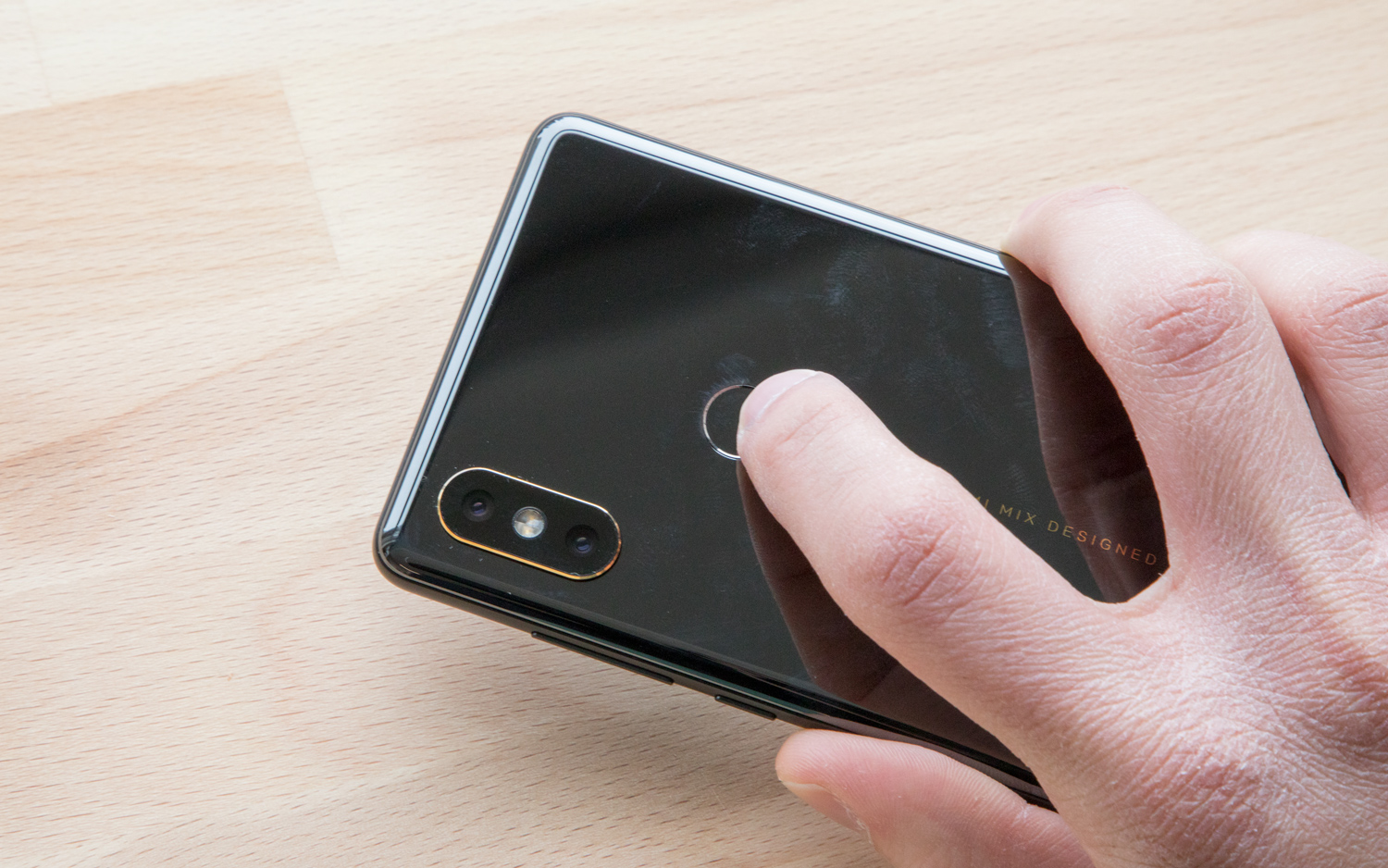
In truth, $530 isn't bad, but you'll probably pay a little more depending on the vendor you choose for importing the phone. And therein lies the biggest problem with Mi Mix 2S ownership in the states: There’s no clear outlet that we or Xiaomi can direct you to to buy this device.
This isn't a Huawei P20 situation, where the phone is sold in practically every other country. The path to buying that phone is as simple as going to the appropriate region of Amazon and checking the box for international shipping. The Mi Mix 2S is offered only in Asia for the time being, with limited sales in some European territories to follow at a later date. If you want one of these devices, your best bet is to visit one of the many retailers that specialize in importing such products, like Flipkart or HonorBuy, and try your luck there.
Xiaomi Mi Mix 2S Specs
| Price | 3,299 yuan ($527) |
| OS | Android 8.0 Oreo with MIUI 9.5 |
| Screen Size (Resolution) | 6-inch LCD (2160 x 1080) |
| CPU | Qualcomm Snapdragon 845 |
| RAM | 6 GB/8GB |
| Storage | 64GB/128GB/256GB |
| microSD Slot | No |
| Rear Camera | Dual: 12 MP f/1.8; 12 MP f/2.4 telephoto |
| Front Camera | 5 MP f/2.0 |
| Battery Size | 3,400 mAh |
| Battery Life (Hrs:Mins) | 10:15 |
| Water Resistance | No |
| Size | 5.94 x 2.95 x 0.32 inches |
Design: Who needs a notch?
Although it's hardly the only player anymore, Xiaomi is one of the originators of the bezel-less design trend that swept the smartphone industry over the past year.
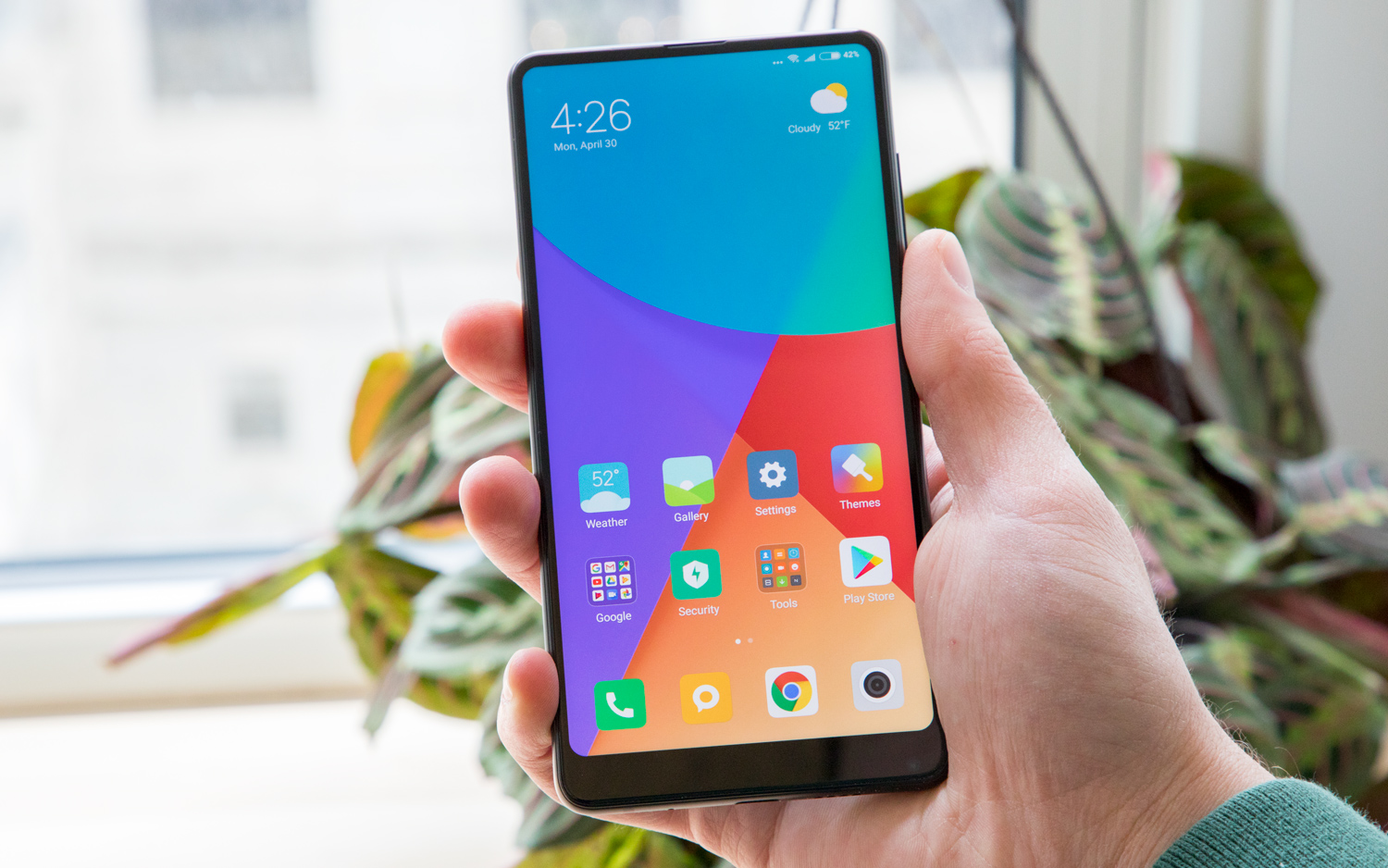
The first Mi Mix, released in November 2016, sported thin edges around three sides of the device, with a rather large chin at the bottom that housed the front-facing camera. The second generation repeats the same general aesthetic, with slightly more-rounded corners, which make the whole thing a bit more comfortable to hold.
The rear of the phone looks as though it's been dipped in a pool of dark silver, and the effect is more akin to that of fine jewelry rather than your run-of-the-mill handset.
As you'd expect, forcing that camera down to the basement greatly affects the way you take selfies — but we'll elaborate on that later. In terms of design, though, that unconventional camera location allows the Mi Mix 2S to get by with a very minimal top bezel. There's just enough room for the earpiece straddling the seam between the glass front and aluminum frame, and it sounds surprisingly good in phone calls.
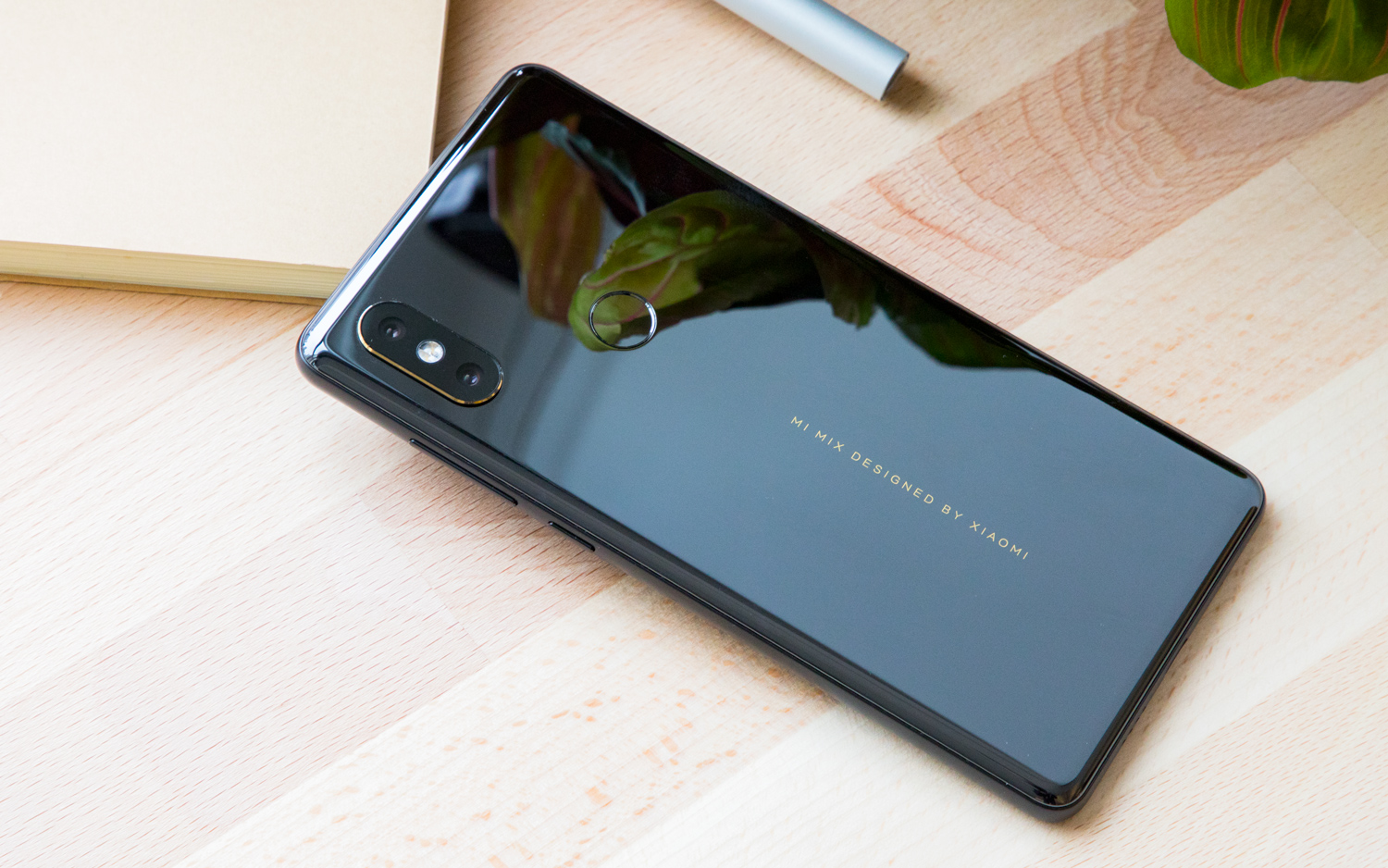
Around the back of this device, Xiaomi distinguishes itself from the competition through the use of ceramic. The rear of the phone looks as though it's been dipped in a pool of dark silver, and the effect is more akin to that of fine jewelry rather than your run-of-the-mill handset. It's all set off with a dash of gold trim tastefully applied to the iPhone X-like vertical camera stack and fingerprint sensor. The elegant "Mi Mix Designed by Xiaomi" branding completes the look.
Overall, the Mi Mix 2S bears more than a passing resemblance to one of our favorite-looking high-end handsets, the Essential Phone — albeit a bit softer and less monolithic. It's flattering to find yourself in such company, Xiaomi.
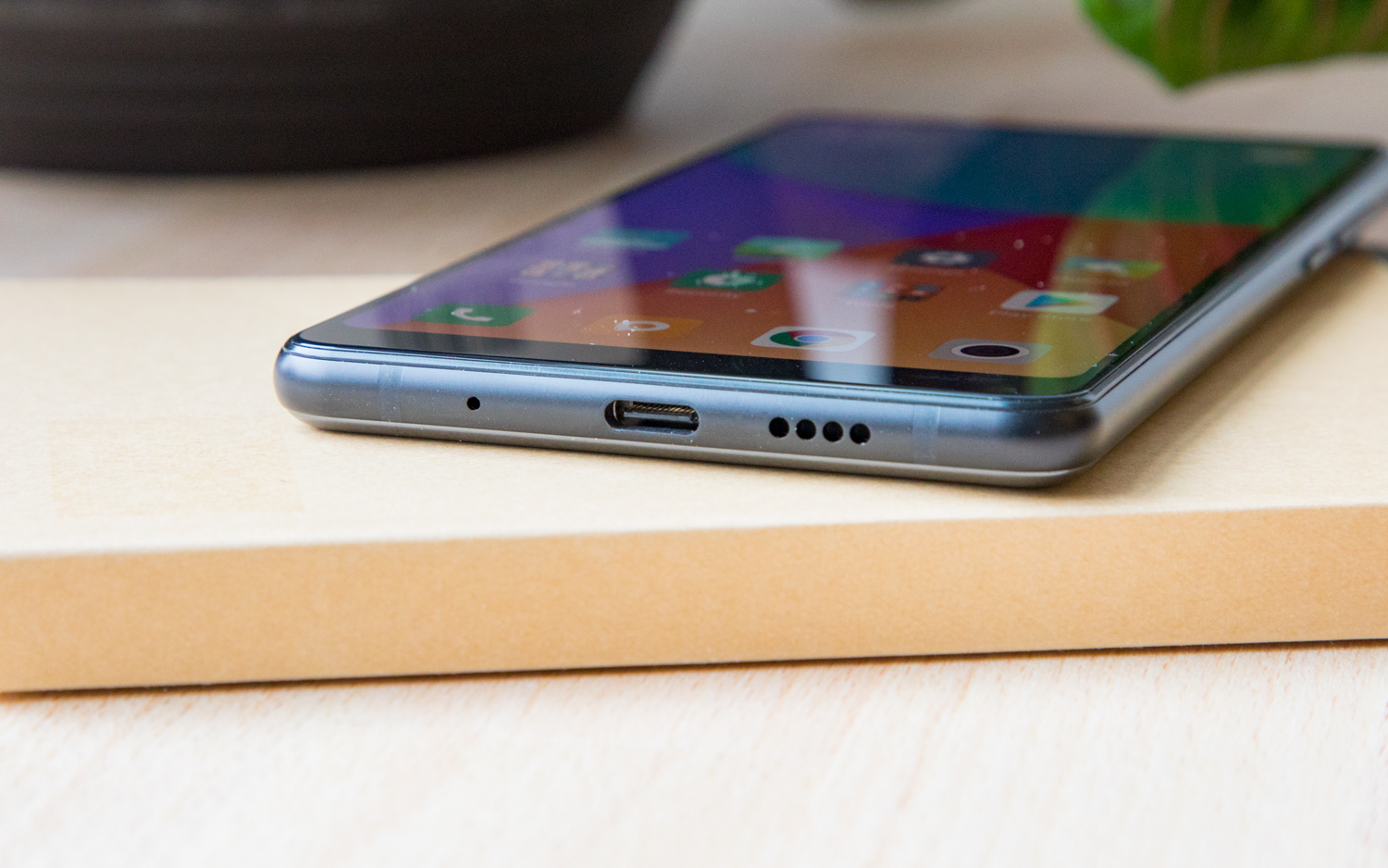
But despite all that style, the Mi Mix 2S lacks creature comforts you'd expect from a phone of this price. There's no headphone jack. To make matters worse, although audio is piped out of both the bottom speaker and the earpiece, the latter sounds remarkably tinny when playing media. The Mi Mix 2S isn't water-resistant, and although it technically has NFC, our device didn't meet Google Pay's security standards — making tap-and-pay transactions a nonstarter.
MORE: Xiaomi FAQ: What You Need to Know Before You Buy
Upon checking with Xiaomi, we discovered the issue was caused by an unlocked bootloader on our our review unit, which we're told isn't the way these devices are supposed to ship to customers.
Display: Nothing special
In another similarity to the Essential Phone, Xiaomi opted not to include an OLED display, which you'll find in the iPhone X, Galaxy S9 and even the discontinued $499 OnePlus 5T. Instead, the Mi Mix 2S has a 6-inch LCD panel with full-HD+ resolution, more similar to the LG G7's screen.
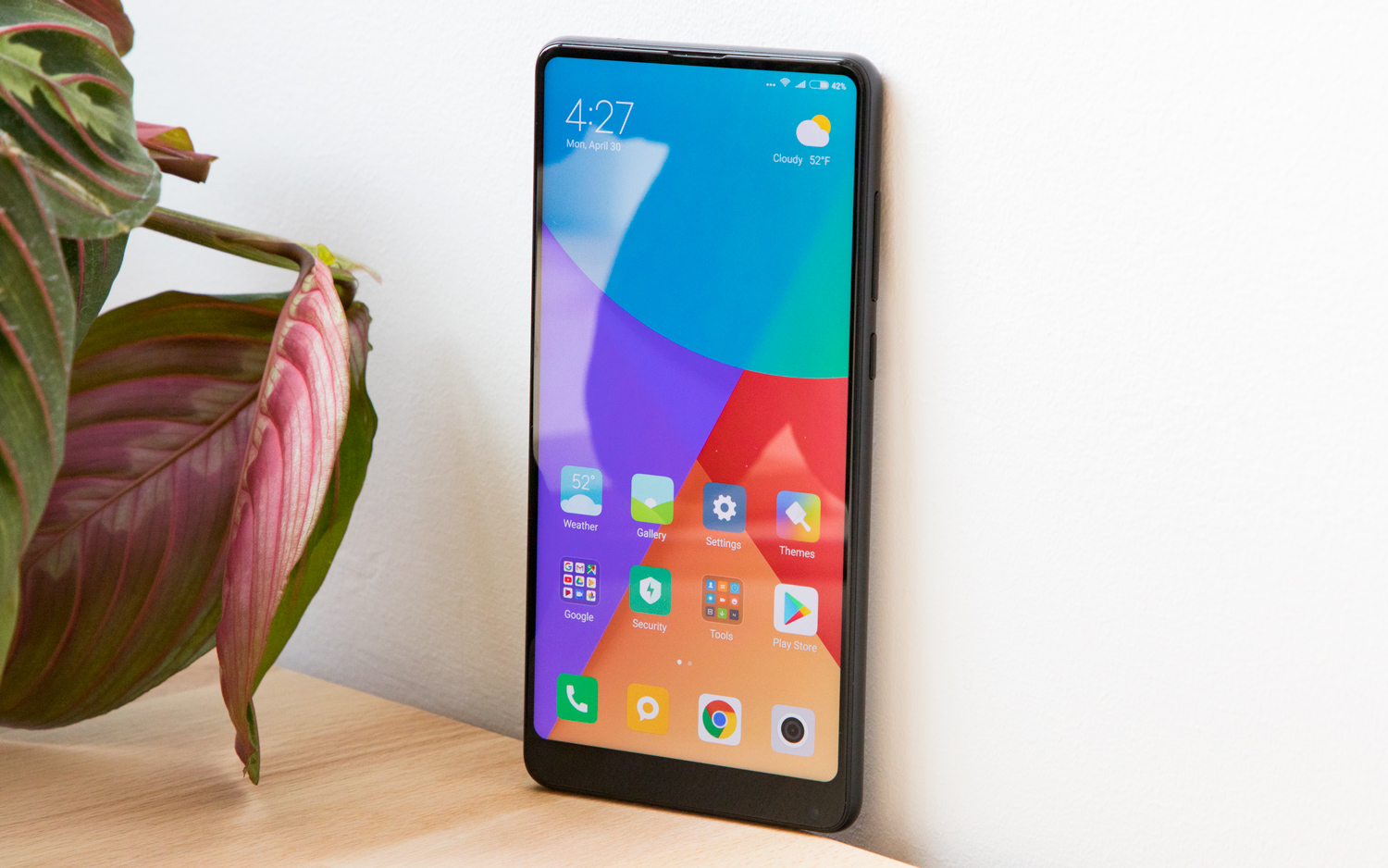
Like with so many LCD-touting phones, there's nothing strictly wrong with the Mi Mix 2S' screen. It's sharp and accurate enough, with the ability to reproduce an acceptable range of colors. But it lacks the punch and perfect blacks of Samsung's boundary-pushing AMOLED displays, not to mention the eye-searing brightness you get from Sony and Motorola's LCD-powered offerings.
Stacked side by side with a Galaxy S9+ while playing the trailer for Avengers: Infinity War, the Mi Mix 2S underwhelmed, with muted hues and slightly poorer visibility in darker scenes. Look closely, and you'll see some light stippling that crops up on solid colors caused by the display's pixel matrix. Fine details, like the texture of Black Panther's suit, just weren't as crisp on the Mi Mix 2S.
The Mi Mix 2S' screen lacks the punch and perfect blacks of Samsung's boundary-pushing AMOLED displays, not to mention the eye-searing brightness you get from Sony and Motorola's LCD-powered offerings.
In terms of numbers, Xiaomi's flagship was again solid but nothing to challenge to status quo. The Mi Mix 2S topped out at a full-screen brightness of 441 nits. Colors were accurate, registering a Delta-E score of 0.28 (numbers closer to 0 are better), though saturation and temperature can be adjusted to taste on the Settings menu. The phone reproduced 124.4 percent of the sRGB color space, which is also satisfactory for an LCD panel. For comparison, the Galaxy S9 reached 630 nits and a 231-percent gamut, which is about as good as it gets among modern handsets.
Camera: Solid in sunlight
The "S" in the name Mi Mix 2S stands for a few extras not found in the regular Mi Mix 2: an updated processor, wireless charging and, perhaps most importantly, a pair of dual cameras. (Previously, there was only one.) You'll find two 12-megapixel shooters on the back of Xiaomi's flagship: a main one with an f/1.8 aperture and a secondary telephoto at f/2.4.
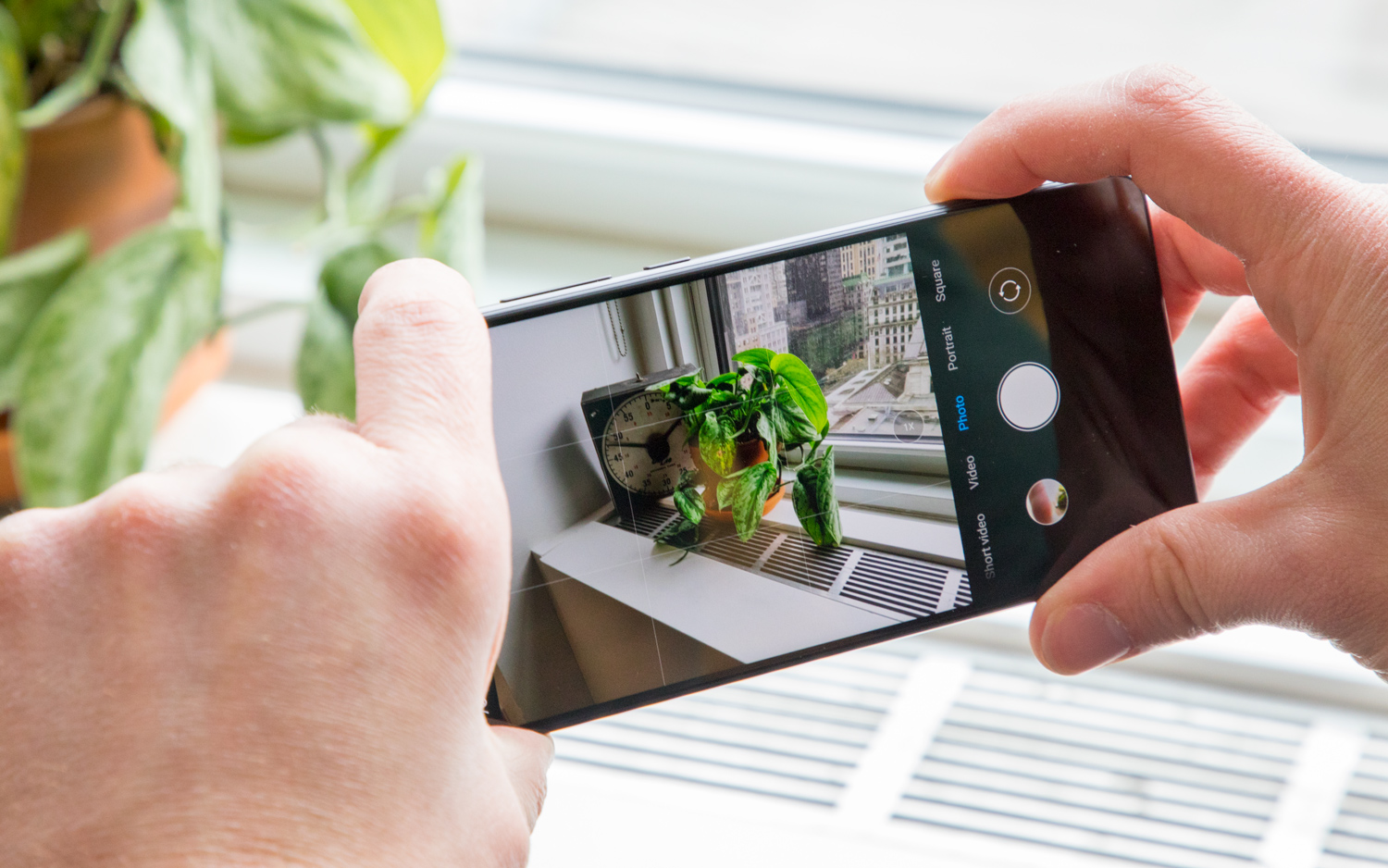
But that's not all, because like so many phones marketed on the strength of their photo-taking prowess, the Mi Mix 2S' cameras are smart. Xiaomi has followed in the footsteps of Huawei and LG with its new AI Camera feature that allows the device to recognize scenes and adjust settings appropriately on the fly.
To see what the Mi Mix 2's new duo of lenses could do, I took it, along with the dual-lens Galaxy S9+, out into the wild. Despite the overcast skies, both Xiaomi and Samsung's phones impressed capturing this tranquil scene in a Pennsylvania state park.
The Mi Mix 2 demonstrates punchier colors and more-realistic contrast in comparison to the washed-out hues produced by the Galaxy S9+. But then again, the sharper S9+ nails the finer details, like the ripples of water down the stream and the sediment along the banks of the creek. The two phones excel in different areas, so it's tough to pick a winner.
These portraits tell a similar story. Both devices clearly opt for different styles; the Galaxy's is more dramatic, with deeper shadows in comparison to the Mi Mix 2S' more natural, muted exposure. Again, there's this slight fuzziness to Xiaomi's rendition, most evident as you zoom in on the model's denim jacket. But this is another case in which the choice of a winner is simply a matter of preference.
However, that changed as the afternoon wore on. These close-ups of moss on the side of a tree taken with each device's telephoto lens favor the Galaxy S9+ in a big way. While the Mi Mix 2S pulled out its foliage filter to pump up the saturation here, I wouldn't say the result worked to Xiaomi's advantage. The moss should have been a lush mix of greens and yellows, not straight-up emerald. The Mi Mix 2S' take lacks nuance, depth and detail. It also could have used some of the blur the Galaxy S9+ expertly applied to the foreground.
The Mi Mix 2S saved its worst performance by far for the low-light round. Xiaomi's device delivered a muddy mess of a shot back in our office. The photo resembled something you'd get out of a budget prepaid handset from five years ago rather than the work of an ostensibly state-of-the-art flagship. The Mi Mix 2S was no competition for the Galaxy S9+, which captured the small plant with remarkable clarity and no noise in sight.
What about that 8-MP front-facing camera? I know — it looks awful, not unlike the "nose cams" adorning many laptops in recent years. Thankfully, though, because the Mi Mix 2S is a phone and not a computer, this camera placement is not that bad. Just turn the device upside down before snapping a selfie, and the screen will flip, too. It's not ideal but far from the worst-case scenario.
The selfie camera's position at the bottom isn't as big a deal as you might think.
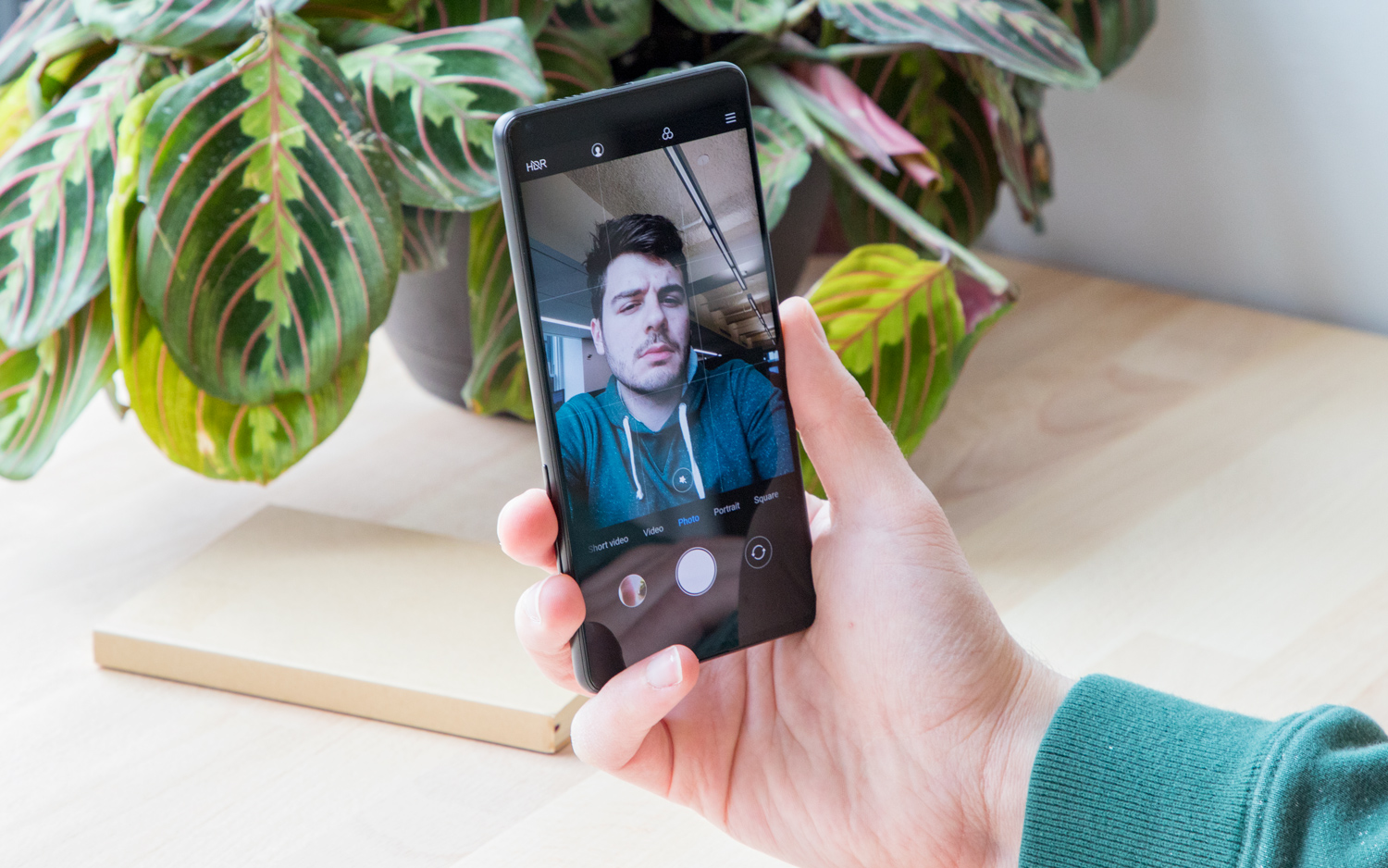
As for the images the front camera produces, those are a different story. The Mi Mix 2S' front-facing camera couldn't reconcile the gray sky, leading to a dreary portrait and very blown-out clouds. The Galaxy S9+ suffered from a similar problem, but the extra dash of color in my face and the background lifts the frame in a much-needed way.
Performance: The fastest (for now)
We're smack dab in the middle of smartphone season, which means you can expect new devices to up the ante for performance until the end of the year. For now, though, Xiaomi can claim the title as most powerful Android handset in the world.
That's mostly thanks to the Snapdragon 845 chipset inside, which by itself is already a very capable slice of silicon. But the Mi Mix 2S is one of the first 845-powered products to also feature an optional 8GB of RAM, rather than 4GB or 6GB, as in the Galaxy S9 and S9+, respectively. And that makes the difference between a fast phone and a reallyfast phone.
MORE: Best Smartphones on the Market Now
Our 8GB Mi Mix 2S edged out the Galaxy S9+ in Geekbench 4, a benchmark that measures overall performance, There, Xiaomi's device turned in a score of 8,377, compared to Samsung's 8,295. That's a slight but noteworthy difference, because the extra RAM means the Mi Mix 2S can juggle more apps running concurrently without experiencing slowdown.
Surprisingly, however, the Mi Mix 2S' strong showing didn't carry over to 3DMark's Sling Shot Extreme graphics test. The phone managed only 3,248 in the OpenGL ES 3.1 portion of the benchmark, while the Galaxy S9+ notched 4,617.
It's hard to say why the Mi Mix 2S underperformed in 3DMark, as this phone carries the very same Adreno 630 GPU found in Samsung's flagship. What's even stranger, PlayerUnknown's Battlegrounds Mobile ran just as smoothly on the Mi Mix 2S as it did on the Galaxy S9+. In any case, having gamed with the phone, we don't believe the numbers are worth sweating; the Mi Mix 2S is a top performer.
Battery Life: Just above average
The 3,400-mAh battery inside the Mi Mix 2S lasted 10 hours and 15 minutes after streaming web pages on T-Mobile LTE. That's just above the 9:50 average for smartphones.
It's a good result, but not quite as good as those from other top-line devices, like the 11-hour Galaxy S9+, the 12-hour Google Pixel 2 XL or the astonishingly long-lasting Huawei Mate 10 Pro, which called it quits after 14 hours and 39 minutes.
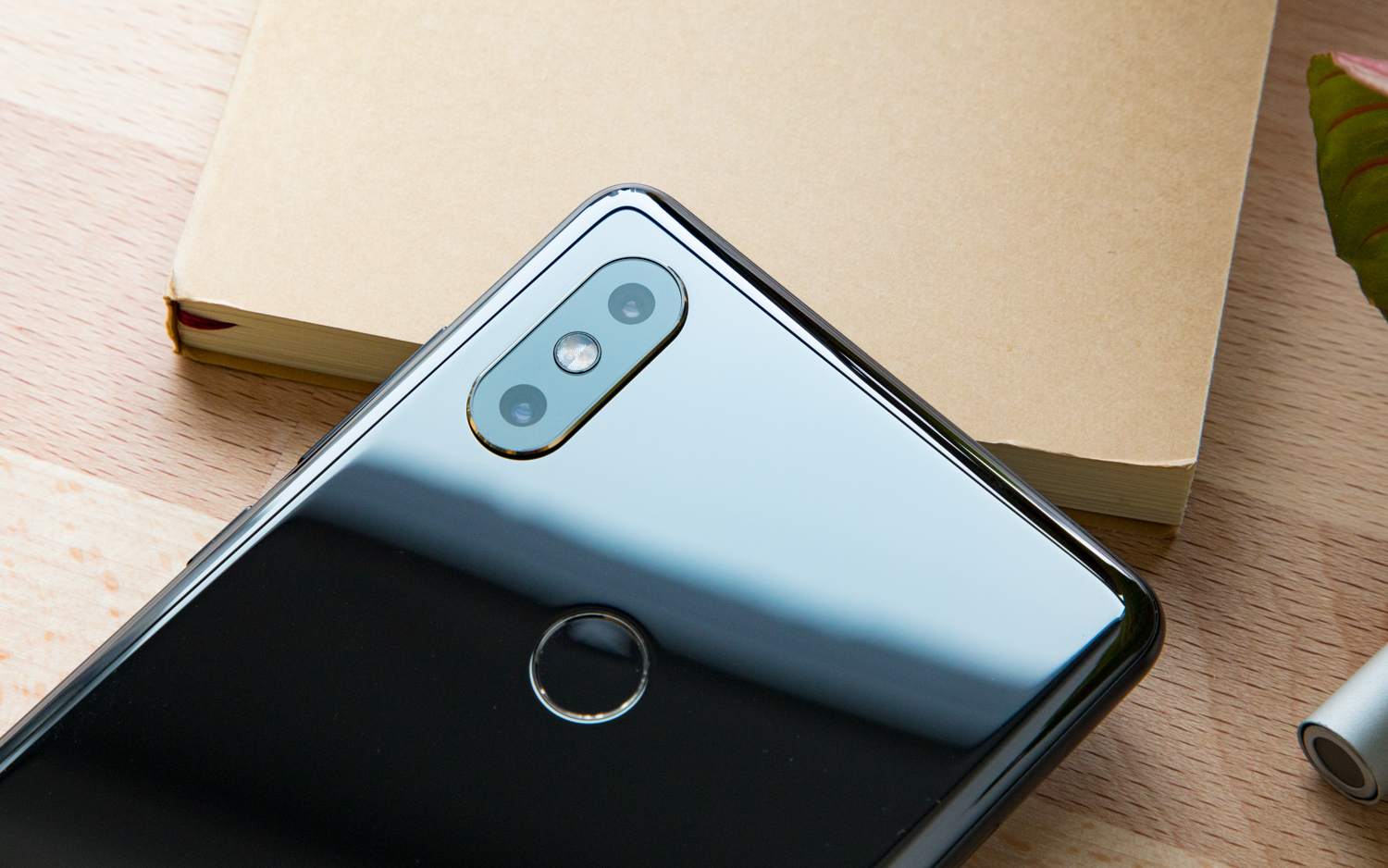
While we didn't have the Mi Mix 2S' stock adapter on hand to perform a charging-speed test, Xiaomi did provide Tom's Guide with one of the company's own wireless charging pads, which come packaged with the 256GB model. Clad in white silicone with a minimalist look, Xiaomi's 7.5A pad takes the Mi Mix 2S from empty to full in about 3 hours. That's hardly a pinch, but then again, the pad is quite inexpensive, costing the equivalent of $15 when bought alone.
Because both the Mi Mix 2S and the wireless charger operate on the Qi standard (the same used on Apple's latest iPhones), you can use any Qi pad in place of the Xiaomi one. Some of them are more powerful than Xiaomi's stock pad and will top up the handset faster. Here are some of our favorites.
Software: An unusual take on Android
Welcome to Android as you've never seen it before. Although the Mi Mix 2S comes equipped with Android 8.0 Oreo, Google's operating system looks and runs completely differently here than on other handsets, and that's because of Xiaomi's MIUI interface.
MIUI has actually been around for a very long time — seven years, in fact, which means it predates Xiaomi's own phones. Back then, MIUI was pitched as an alternative to stock Android that provided devices like the original Motorola Droid with a user experience more akin to that of iOS. MIUI didn't even support the Google Play store, then known as the Android Market.
Xiaomi's MIUI interface feels cohesive in a way most custom Android skins don't.
Fast-forward to 2018, and MIUI now launches on all of Xiaomi's hardware. The design — which was once heavily inspired by Apple's flair for skeuomorphism, realistic textures and 3D buttons — is flatter and more minimalist to emulate the iOS of today. More importantly, the Play Store is on board.
I have to hand it to Xiaomi for accomplishing something I've long thought impossible: creating an Android skin I actually don't hate using. Many of the same features offered by other manufacturers, like the ability to duplicate apps and create "secret" alternate user profiles, appear in MIUI as well. However, Xiaomi's interface feels cohesive in a way most custom takes on Android don't.
For one thing, the extra functionality is typically useful and never feels tacked on. I like the iPhone X-style gestures that Xiaomi offers as an alternative to Android's traditional navigation bar. I also like the weather widget thoughtfully included above the quick toggles in the notification shade.
MORE: Android Tips to Unlock Your Phone's Full Potential
Those are the kind of little quality-of-life improvements that MIUI offers, and they mesh well with the simplistic, airy and clean aesthetic Xiaomi's established for this phone. It's not for Android purists, nor do I prefer it to the Pixel 2's software. However, MIUI is a stylish departure from tradition that should excite users pining for something that doesn't feel totally like Android or iOS.
For updates, Xiaomi takes a different approach than other manufacturers. The company tells us its Chinese customers are more concerned with getting the latest edition of MIUI, rather than Android updates. For that reason, Xiaomi phones typically receive only one major Android version upgrade during the devices' life spans, while they get up to five or six years of new MIUI software. However, with Google streamlining the Android update process through Project Treble, Xiaomi says it's currently reconsidering its practices.
Bottom Line
There's a lot to like about the Mi Mix 2S. While the greatest minds at other phone makers are busy aping the iPhone X's notch, Xiaomi set down its own path. This is one of the prettiest handsets of the year thus far and likely will remain in that conversation through the end of 2018.
In terms of performance, the Mi Mix 2S is similarly admirable. But right now, Xiaomi's range-topper mostly benefits from Samsung's exclusive hold on the Snapdragon 845 chip here in the U.S. Once that subsides, as it will in the coming weeks with handsets like the Sony Xperia XZ2 and Asus ZenFone 5Z, Xiaomi's advantage will surely erode.
That leaves us with a beautiful phone capable of excellent performance that U.S. buyers will soon be able to get elsewhere, whose other qualities aren't necessarily knocks against it but don't impress, either. The iPhone X and Pixel 2 XL outclass the Mi Mix 2S' hit-or-miss dual cameras, while the Galaxy S9 duo offers far better screens and a more extensive feature set, with water resistance, a microSD card slot and booming stereo speakers. The OnePlus 6 — which hasn't been announced yet — will also bring Snapdragon 845 power and will likely compare favorably in terms of price, if history is a good predictor.
One day, the Mi Mix 2S might be sold in these parts. Xiaomi already has a small presence in the U.S., selling assorted tech products on Amazon, and CEO Lei Jun has gone on record saying he'd like to add phones to that roster by the end of this year or early next. If that plan pans out, the Mi Mix 2S would make for quite a premiere, especially if Xiaomi can keep the price down.
But that's not the reality. The Mi Mix 2S doesn't contend with the best devices in its class, and prospective buyers have to jump through too many hoops just to get their hands on one. It's interesting, but simply too inconvenient to recommend.
Credits: Shaun Lucas/Tom's Guide
Adam Ismail is a staff writer at Jalopnik and previously worked on Tom's Guide covering smartphones, car tech and gaming. His love for all things mobile began with the original Motorola Droid; since then he’s owned a variety of Android and iOS-powered handsets, refusing to stay loyal to one platform. His work has also appeared on Digital Trends and GTPlanet. When he’s not fiddling with the latest devices, he’s at an indie pop show, recording a podcast or playing Sega Dreamcast.
-
leon061080 Thanks for a informative review. Does the phone come with the Google play store installed as standard now? Many thanks.Reply
